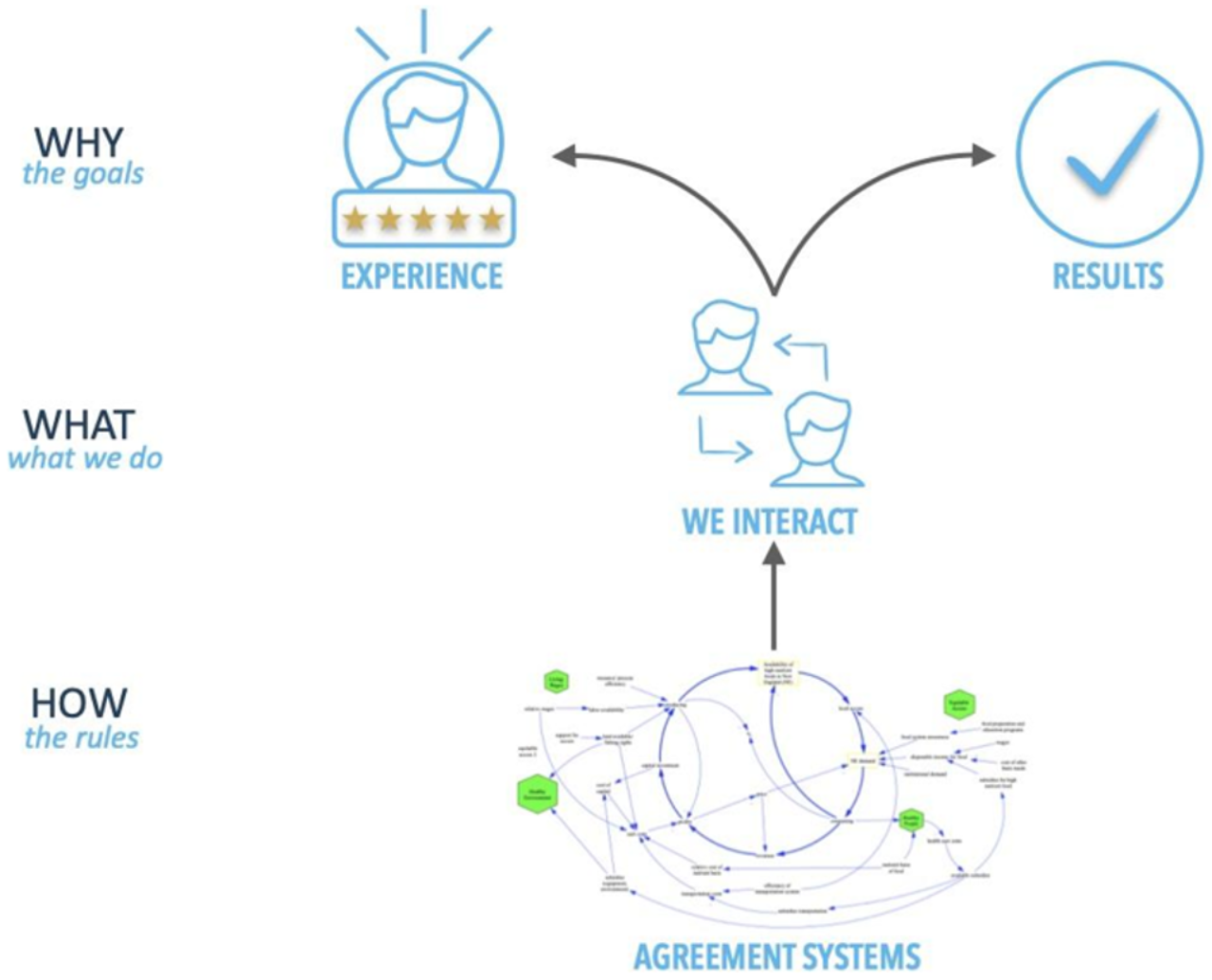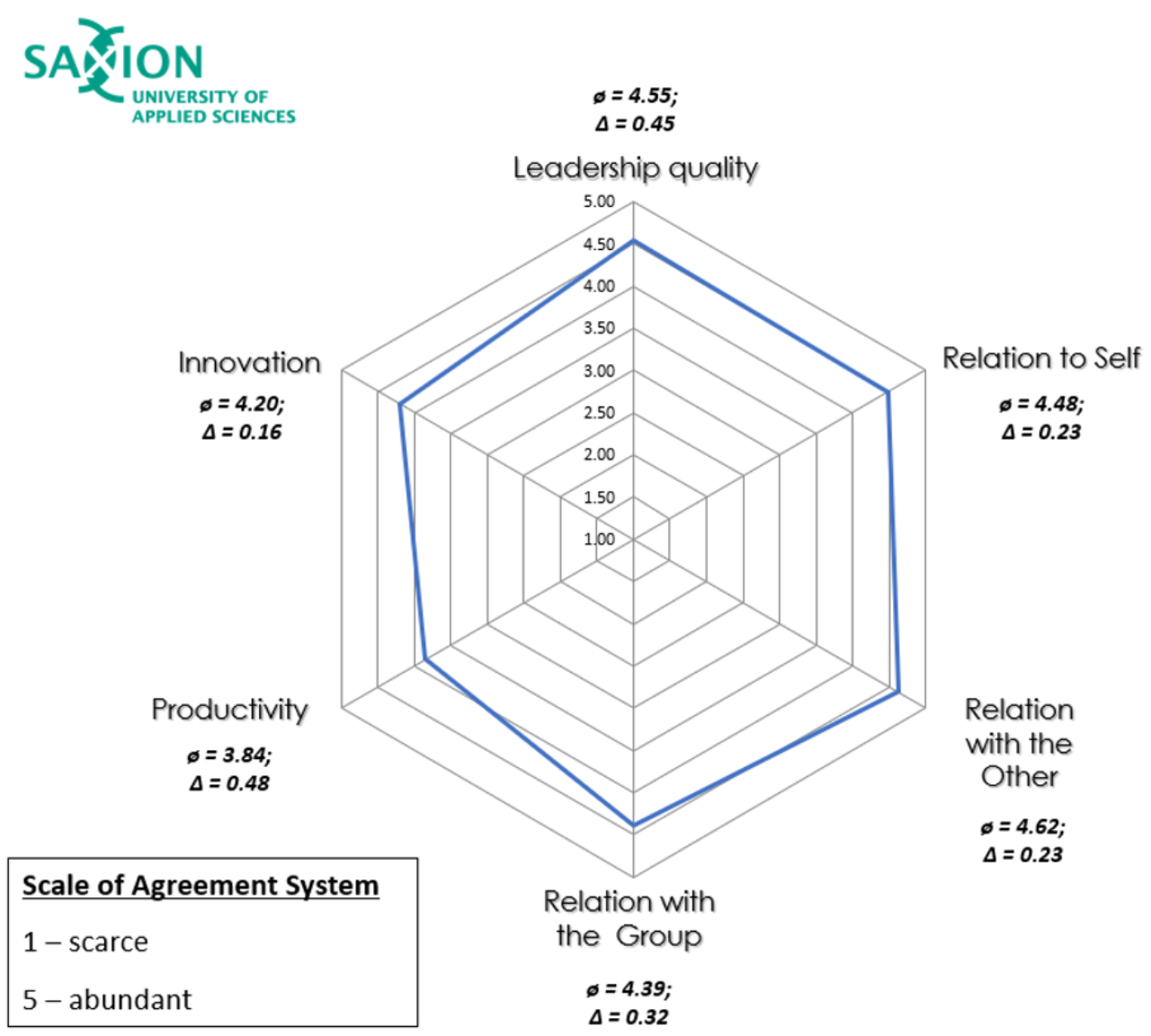Hi everyone,
Thank you for taking the time to read this article! My name is Hristo and I am a bachelor student in International HRM at Saxion UAS, as well as a student in the Honours program “Creativity in Finance and Management”.

The research
Today, I would like to share with you my insights from a project that explored the essential ingredients to the success of an organization (no matter this size, the industry, etc.). The model (see the image below) communicates that all groups/organizations work with agreements (e.g. I will prepare this presentation if you source me the images). It also pinpoints that we, most often than not, interact with one another, whilst keeping these agreements' ‘at hand’. Ultimately, if our agreements are aligned, we thrive during our interaction periods, which results in us having a great working experience, as well as accomplishing the set goals.

On the basis of that model, a new six dimensions model emerged. It focuses on what are the agreement systems that we ought to have, in order to have an excellent working experience, whilst fulfilling all of our set goals. In other words, these dimensions are used to measure organizational performance. As seen in the figure below, each dimension has three levels – spanning from a very unproductive one (e.g. not interacting with a colleague) to productive (e.g. to interact with a colleague) and finally, very productive (e.g. to collaborating with a colleague). If you and your organization rank/rank the highest on all of these dimensions, this directly translates to a high-performing individual/organization. In the case of this research, the target group scored an average of 4.35, which positioned them in the higher ranks of the graph (see Figure 3). Of course, there was room for improvement and that allowed for critical questions to be asked, whose goal was to place the group in a reflection mode and engage them in a discussion. This exact part was a key takeaway from me – instead of giving a presentation, invite the group to actively participate in a conversation over the important items. In this way, they are able to co-create their own success, which increases their motivation to follow up with the agreed actions.

To conclude, I began with the question – “How can you compel the individual that their actions do matter in the bigger picture?”. The answer I found was – show to them their impact on the group/organization/planet, try to make it personal to them, and help them see the way forward. However, remember that you can only create the space for that to occur, they are the ones deciding if they want to step in or not.
Finally, I want to express my gratitude towards my mentor in this journey – Christoph Hinske.